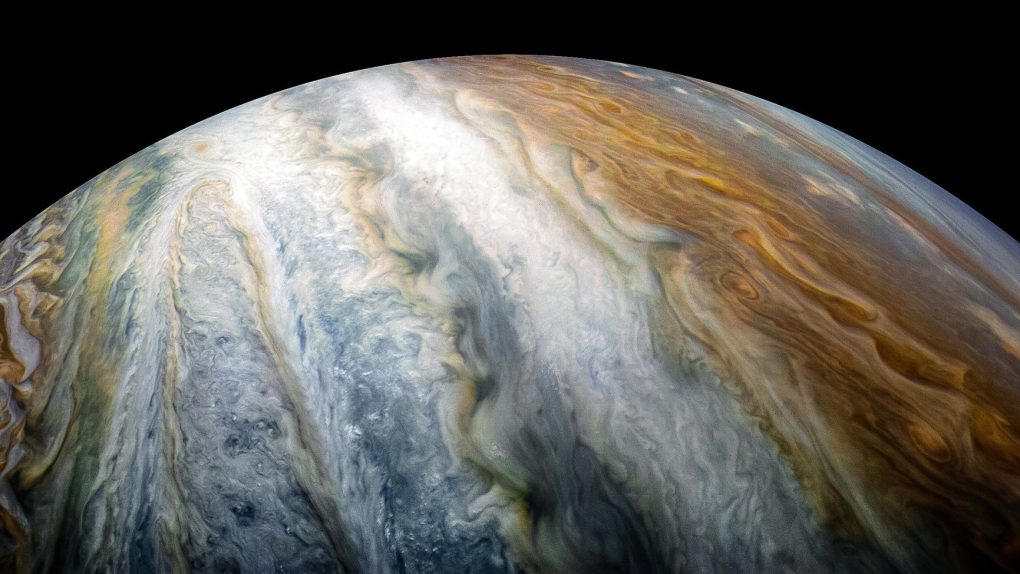Jupiter is, scientifically speaking, not great for humans. The gravitational pull is about 2.4 times that of Earth, and its atmosphere is mostly hydrogen and helium. Even within our own Solar System, there are much better candidates for sustaining life, even including some of Jupiter’s own moons.
But from space, it’s far harder to see Jupiter’s hostility to life forms. In fact, this color-enhanced image of Jupiter’s cloud belts, taken by the Juno spacecraft, makes the planet look positively inviting.
The image was taken by Juno on December 16th, during the probe’s tenth-closest flyby of the gaseous giant. Although the image looks close, that’s mostly because Jupiter is huge. At the time of capture, Juno was 8,453 miles from Jupiter.
A spokesperson for Nasa said: “The dark region in the far left is called the South Temperate Belt. Intersecting the belt is a ghost-like feature of slithering white clouds. This is the largest feature in Jupiter’s low latitudes that’s a cyclone (rotating with clockwise motion).”
In the same pass, Juno also captured a far more abstract photo of Jupiter’s clouds. The image above was captured 8,292 miles from Jupiter’s atmosphere on the same day, and it shows the turbulence with far greater detail. The second image was color-enhanced by Gerald Eichstädt and Seán Doran using publicly available data from Juno’s sensors, while the first image was processed by Kevin M. Gill. The publicly available feed of images from Juno has proved fertile ground for citizen scientists to try their hand at image processing.










